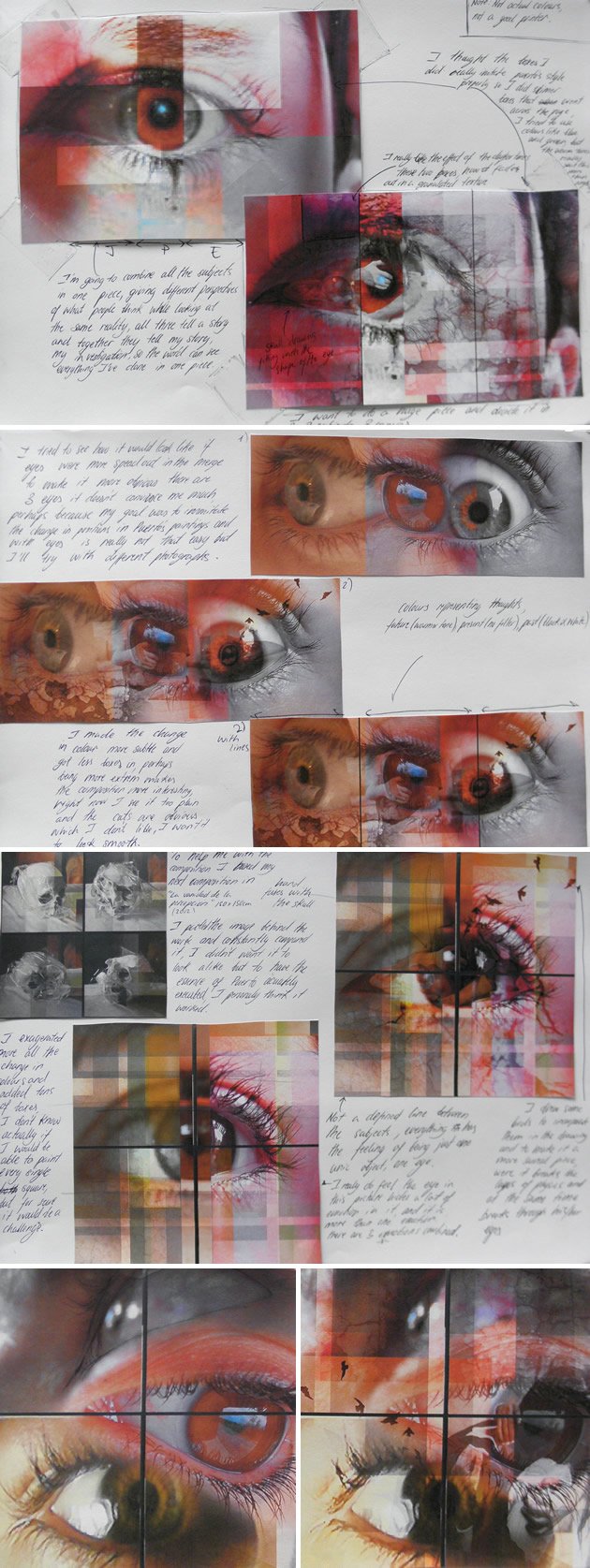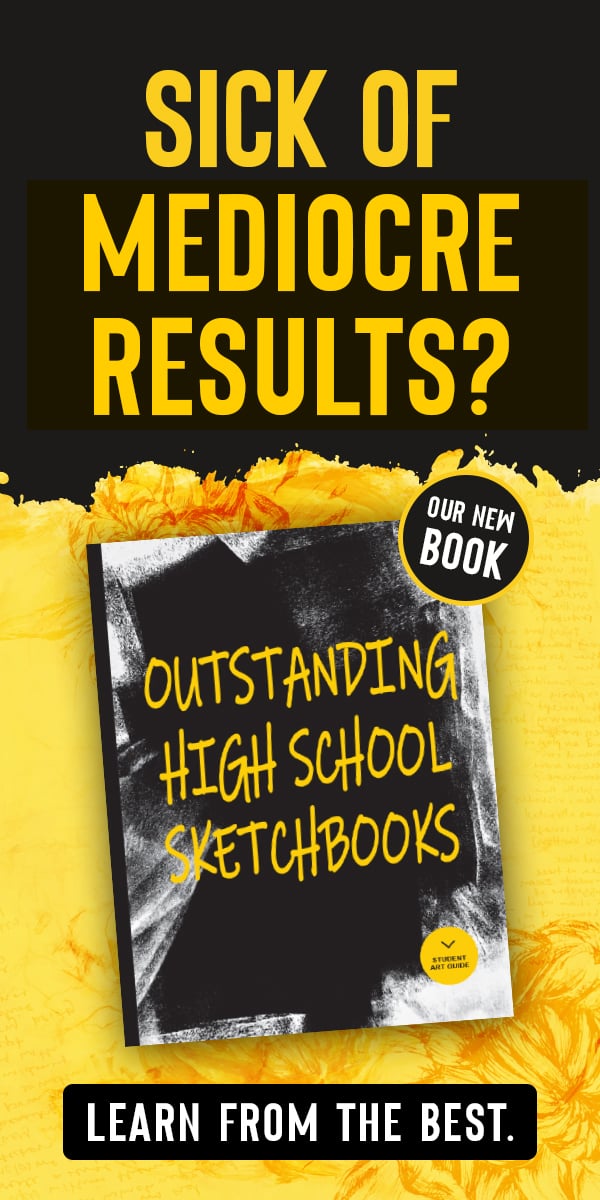Last Updated on April 2, 2023
This article features artwork by Elena Tomas Bort, completed as part of Unit 3, Edexcel A Level Art at the Laude British School of Vila-real, Spain. Elena’s coursework project was awarded 78/80 and focuses upon how to draw eyes so that they reveal emotions and reflect messages about life.
Eyes can be a difficult subject to incorporate within a high school Art project; they consist of reflective surfaces, subtle color changes and miniscule detail. The challenge lies not just in how to draw realistic human eyes, however, but in how to compose and approach these in an innovative and original way. Artists have been drawing eyes for centuries: there is a real risk that high school Art students produce cliché and overdone compositions that offer little originality or personal insight (you may also be interested in reading how to avoid the cliché in a high school Art project). Elena’s art project provides an excellent example of how creative use of mixed media and digital exploration, combined with thorough and an unflinching investigation, can push and drive an art project of this nature in an exciting direction.
Elena: “The Student Art Guide has been a huge help for me from the start of my IGCSE Art until the end of my A Levels. When I was lost, this was my first place to go to and decide my next steps, especially for my Personal Study.
“My Unit 3 project, ‘The mystery behind eyes’, was inspired by an illustration book Dead Moon by Luis Royo (Amazon affiliate link). I transformed my sketchbook into the diary of an investigator which is obsessed with eyes. I followed three “subjects” where each of them represented the past (my brother), the present (my friend) and the future (myself). Every subject tells his own story only through his eyes and it’s up to the viewer to interpret what the story is about. This means that they can feel like the investigator trying to find what the story is behind each eye. I used a crazy combination of media including craquelure paint (crackle glaze which creates the effect of an aged paint surface) to make the effect of a real broken surface. It was an unconventional project and I knew that it needed to be done outstandingly good to work out, but the risk was worth it, as I achieved 78/80.





Elena’s final work is inspired by Spanish artist Nacho Puerto, who Elena also met and interviewed for her Personal Study.
Elena’s sketchbook in its entirety can be viewed in the video below:

